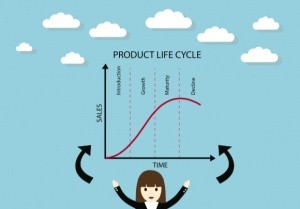Product Life Cycle templates Start the discussion!
New Category!
Thinking of a Best Practice which could fit in this category? Tell us

What is Product Life Cycle?
The product life cycle shows the period of time over which an item is developed, brought to the market, and eventually removed from the market. This cycle is split into four stages: introduction, growth, maturity, and decline. The product life cycle is an important concept in marketing and is used to calculate when is the appropriate time to advertise, lower prices, diversify into new markets or change their packaging.
Stage 1: Introduction
This stage of the product life cycle can potentially be the most costly for a business. For instance, the market size is small, meaning sales are low, even if they are increasing. However, the cost of research and development, market research, and the design of the product can be very high, especially if the market is competitive.
The impact on the marketing mix:
Product: branding and level of quality is established and intellectual property protection is obtained.
Price: varies amongst different markets, but generally remains low.
Promotion: aimed at innovators and early adopters. Promotions aim to generate product awareness.
Distribution: selective until consumers show acceptance of the product.
Stage 2: Growth stage
This stage denotes strong growth in the sales and profits of a product. Because of this, the company can benefit from economies of scale in production, meaning the profit margins will further increase. Therefore, more money is available to invest into product development or promotional activities.
The impact on the marketing mix:
Product: the quality is maintained and some additional new features may be added.
Price: generally stays the same due to high demand and low competition.
Promotion: are less targeted and aim to reach a wider audience.
Distribution: channels are added as demand increases.
Stage 3: Maturity stage
The product is already established by this stage and the aim is to keep the market share. The maturity stage is usually the most competitive time for most products; therefore businesses should invest wisely in any marketing campaigns. Product modifications should also be considered, to generate new interest in the product and spark demand.
The impact on the marketing mix: * Product: features may be enhanced in an attempt to differentiate from competitors.
Price: can be lower due to increased competition.
Promotion: new campaigns to emphasize product differentiation.
Distribution: becomes more intensive and incentives may be offered to encourage preference over competing products.
Stage 4: Decline
The market for a product will eventually begin to shrink. This could be due to many reasons but most can to be due to market saturation or simply because consumers have switched to another product.
As sales decline, the organization has various options:
Maintain the product
Harvest the product
Discontinue the product
For more on the Product Life Cycle:



